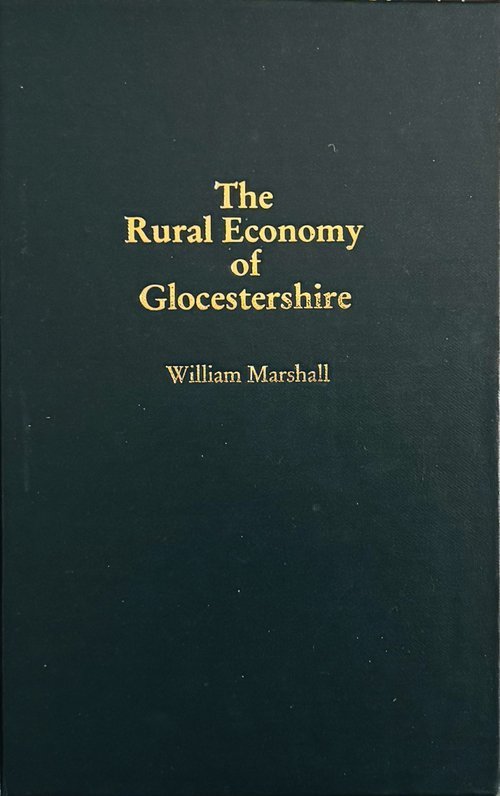Hedgerow Timber ~ An 18th Century Perspective by William Marshall 1796

William Marshall 1796
HEDGEROW TIMBER ~ An 18th Century Perspective
13 July 2025
THE HEDGE TREES of the vale of GLOCESTER (the vale from hereon) are mostly those of ELM, and WILLOW. Few of OAK or ASH.
The MAPLE, which grows unusually large, here, is considered as a timber tree, and is put to many uses, for which, in other districts, it is not deemed suitable. But the nature of the soil, or the variety which is here cultivated, may render its texture less brittle, than it generally is, in other districts. Hurdles, gates, and even cider press screws are made of it.
The ELM (chiefly the fine-leaved elm) grows with uncommon luxuriance and to an unusual size, in the vale soils. Its progress is quickest, on the lighter warm lands; but, there, the trees soonest decay, and the timber is of the least of value. In stiffer, more clayey situations, its growth is less rapid; but it’s timber is a much better quality; the colour of iron; and, in some instances, almost as hard. The Bristol ship-builders have a supply of keel-pieces from this quarter; and I know no country which is so likely to furnish good ones.
The Vale of Glocestershire may boast of three of the most remarkable trees in the island.
PIFFE’s ELM,
the BODDINGTON OAK,
and the TORTWORTH CHESTNUT;
But having described them fully in another work, I feel bad to particularise them, here. (ƒ i) Hetero timber is universally lopped ; few, however, are headed, low, in the pollard manner; except WILLOWS; which, as has been said, are here, considered in a degree necessary to every farm.
William Marshall
1796
Surveyor of Land
Regarding ELMS and DUTCH ELM DISEASE ~ a note by KTW (ƒ ii)
Footnotes (ƒ)
(ƒ i) See PLANTING and RURAL ORNAMENT, articles FAGUS: QUERCUS: ULMUS. WM 1796.
(ƒ ii) KTW in 2025. Although Dutch Elm Disease is present in the United Kingdom of Great Britain and Northern Ireland in 2025, there are signs of recovery. Efforts are therefore underway to restore our Elm populations. The disease devastated Elm populations in the 20th century but new disease-resistant varieties and targeted management programmes begin to offer hope for the future. It takes a moment to comprehend the devastation until we consider the brutal fact, that the fungus wiped out an estimated 25 million Elm trees in the United Kingdom during the 1960s and 1970s.
And it is still present in the United Kingdom, and continues to spread, particularly so, in northern Britain i.e. Scotland and Northern England. It is for this reason that communities, throughout the four nations, do everything possible to destroy this fungus. Elm loss has very severely impacted the British landscape and biodiversity within these beautiful islands.
In recalling our landscape in the 1950s and the early 1960s II do not exaggerate when I write that our landscape changed beyond recognition in the space of just twenty years. It was only when the Elms had gone, that we realised just how strong and mighty were they the very fabric of our nature and countryside, holding everything together. KTW 13 July 2025.
Facsimile Scan
The Opening Gambit to the Counties of Glocestershire and North Wiltshire in 1796
The 1979 Certification
that the volume I work from is Set Number Forty of Two Hundred Sets ~ two volumes of facsimile reprints, 183 years and two centuries later.
A fictional depiction of a Surveyor of Land in His Majesty’s Realms in the late 18th Century.
Digital Artwork by KTW 2023
The Great and High Trees
Great Elms in Sulgrave Village, Northamptonshire. Sulgrave Village is a vibrant and very active community. Sulgrave is just eight miles away from the villages of Upper and Lower Boddington in Northamptonshire where my father’s mother grew up. This row of Great Elms is a wonderful reminder of the landscape across all our counties that, only when they had been felled, did we actually notice their absence. As a boy, I used to look up and think “the great and high trees”, a phrase that first entered my writing when describing the trees in the Gloucestershire article An England Country Garden written in 2004.
The link here takes the visitor to a wonderful collection of photographs.
13 July 2025
Gloucestershire and Liverpool
© 2025 Kenneth Thomas Webb









